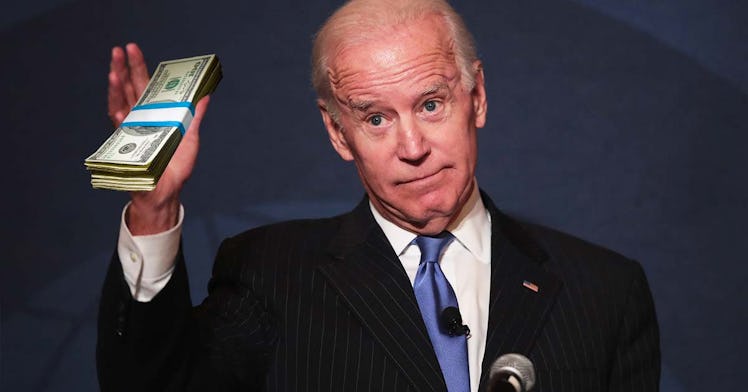You Probably Won’t Get a 4th Stimulus Check, But Biden Could Still Get You More Money
More dollars—with more strings—could be on the way to American families.

In the past 14 months, the federal government has sent out three separate stimulus payments to hundreds of millions of its citizens. Even one such stimulus payment would have been unthinkable before the pandemic, but now people are reading the tea leaves to see if a fourth stimulus check could be on the horizon.
Vaccination numbers are rising, the unemployment rate is falling, and President Biden himself hasn’t gotten behind the idea, despite Congressional support, so a fourth check doesn’t seem all that likely. Still, it does not appear that we are on our way back to a pre-pandemic governing consensus, with major spending packages on the wy.
The experience of the pandemic—and the revelation that the government can just print money and give it to people—has changed a lot. And President Biden is pursuing more aggressive spending programs.
Even if there isn’t another stimulus payment, Biden’s American Families Plan would send Americans (and save Americans) millions of dollars. Here’s how.
The child tax credit that passed with the American Rescue Plan would be extended through 2025. That’s another four years of the now fully refundable, more generous credit that’s worth $3,600 a year per child five and under and $3,000 for those six to 17. It’s also fully refundable, which means parents who meet the income restrictions would get $12,000 to $14,400 per kid more if the extension passes (assuming said kids don’t turn 18 before 2025).
The American Families plan is also a huge education bill. It would make two years of community college free for everyone. The average cost of a two-year public school during the 2017-18 school year was $3,600, so free community college is roughly a $7,200 savings value.
On the other end of the educational timeline, Biden’s bill would also make pre-kindergarten free for three- and four-year-olds. Aside from the value of the education kids will receive (a valuable but tricky to quantify commodity) it means there will be two years during which parents don’t have to pay for childcare. If you assume a fairly standard nine-month academic calendar and know that the average cost of childcare is $1,230 a month, then universal pre-K is probably worth around $22,140 in saved childcare costs on average but could be worth far more, or far less, depending on where families live and how many kids they have.
And speaking of childcare, the American Families Plan does include childcare subsidies that will effectively limit what families can pay for daycare to seven percent of their income. Considering that working families spend an average of 35 percent of their income on childcare, that’s a big deal. Those families would save roughly $7,500 per year on average, depending on how many kids they have and where they are.
It would also establish a national paid family and medical leave policy that would last 12 weeks and be worth up to $4,000 a month, which means it could be worth up to $12,000 beyond the value of spending time with a newborn, newly adopted kid or sick family member which is, of course, priceless.
This article was originally published on